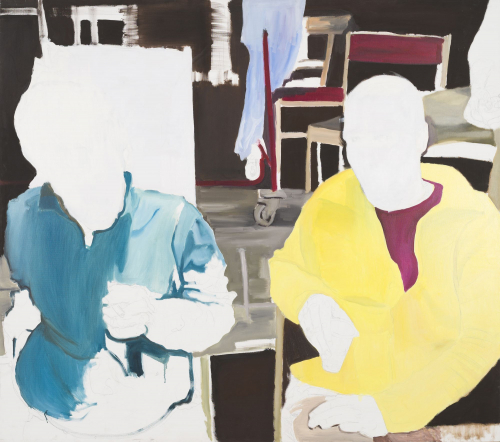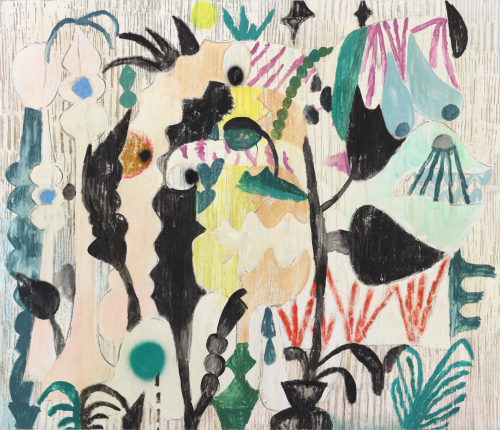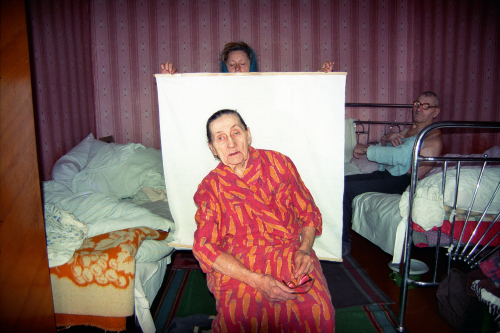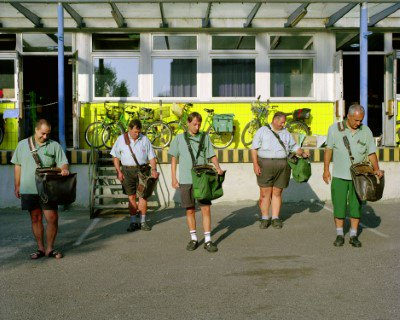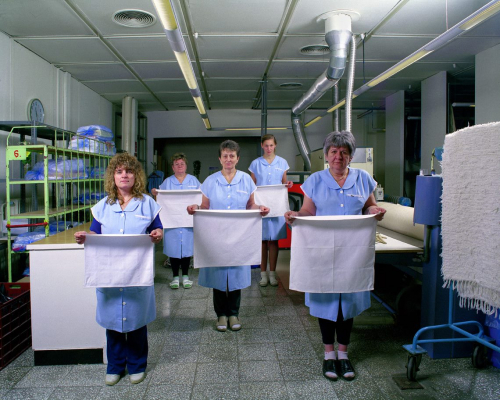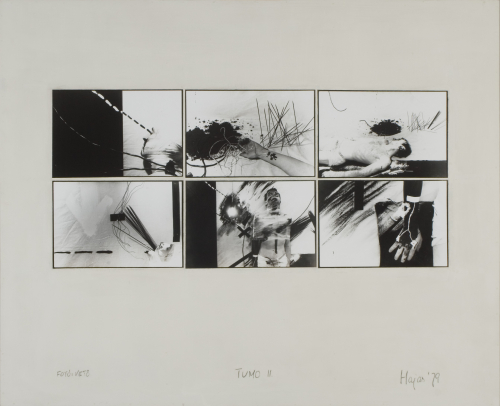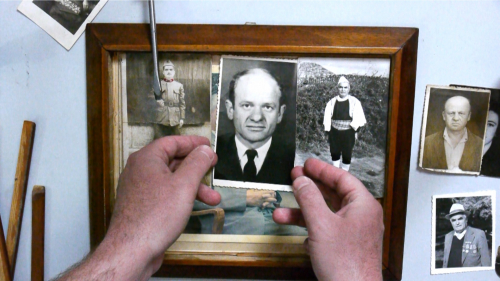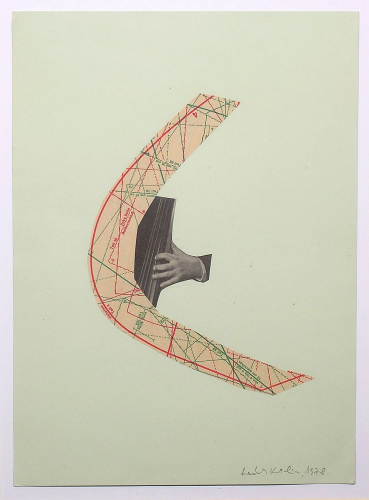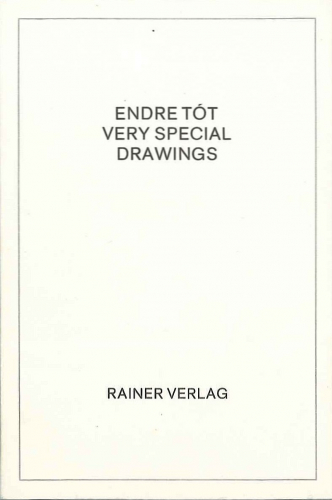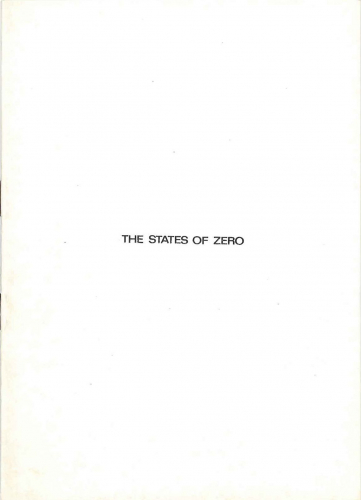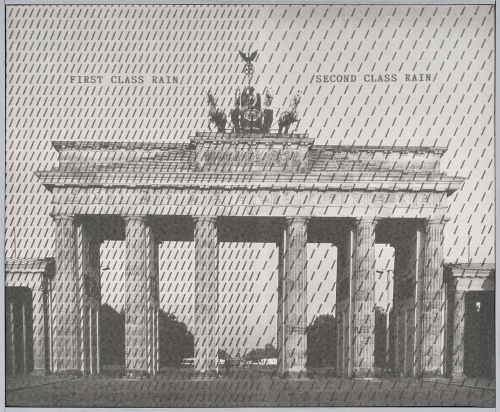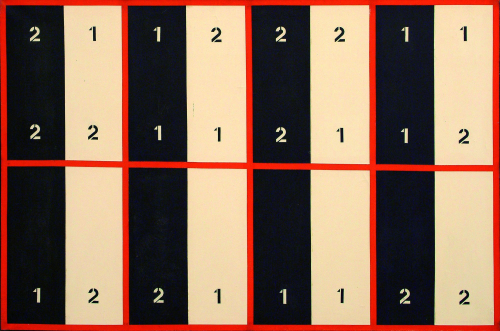This selection mainly includes works that have been acquired – purchased with the help of the NKA colleges, deposited by the Ludwig Stiftung in Aachen, or donated by artists and art collectors – over the last 7–8 years and only those that have not been shown in our permanent and temporary exhibitions before, thus providing the public with a sense of novelty.
The exhibition was open: 4. March, 2022 – 24. April
More info about the exhibition.
Related contents

Me and Mariupol
The central themes of the artist’s short films are political and social hardships that permeate the everyday life of people and affect their daily reflections, hopes and dreams.
Urna Honorarii
In 1997, GABOR BAKOS started his “artistic project of unforeseeable length” entitled PPP (Personal Press Project), in which he explored the place of the artist in society, the value of art, its economic role, and the relationship between the artist and money, using various means and forms. With t

Graphite Relief
He has been making reliefs in graphite and plaster since the early 2010s by dropping graphite from a predetermined height into malleable plaster and then interfering with the structure created by chance.
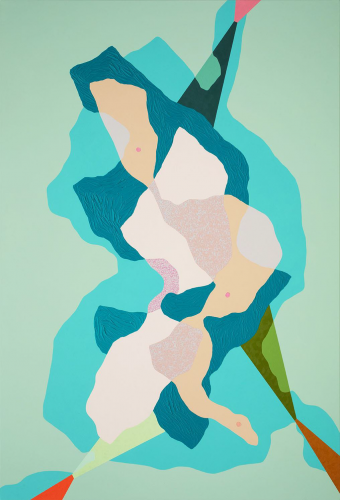
January 1st Morning
The definition of an abstract image is relative because it covers a wide spectrum, from geometric to monochrome or expressive forms.

Censored Imre Bak
Censored Imre Bak is an continuation of the series of paintings Paradise Lost from 2014, in which the artist duo “collaborates” with famous artists (Cranach, Bosch, Blake) to create new artworks contaminated with dark matter.
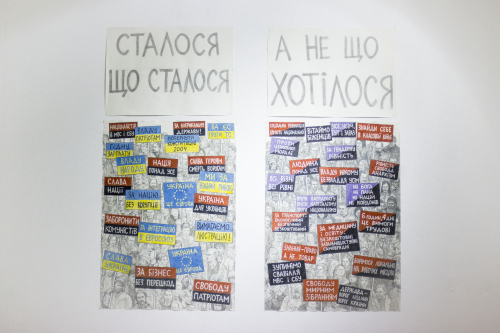
What Is Done Is Done But It Was Not Wanted.
David Chichkan's Lost Opportunity exhibition, organized by Visual Culture Research Center in Kyiv in February 2017, was devoted to the war and the situation after the Maidan 2013-2014 in Ukraine.

Family Album 1-4.
The black and white photo series Family Album was taken by ANNA DAUČIKOVA during her stay in Moscow in 1988.
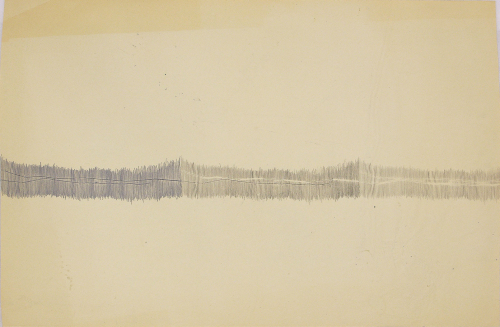
Thread Work
The importance of MIKLÓS ERDÉLY’s art and personality cannot be overstated. This piece is a typical carbon paper work illustrating the epistemological and mathematical thinking of Miklós Erdély.

Transcendence
FILKO was not only a founder of Slovak conceptual art, but also a key figure in Slovak Actionism.
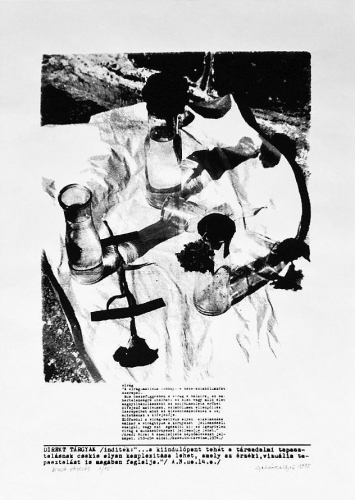
Direct objects: Flower
The work Direct Objects, made in 1974, shows three jars: a water-filled jar with a blooming red carnation, an empty one with a taped mouth and a flower hanging out of it, and finally a water-filled empty jar with a carnation taped next to it.

Transpositional Exercise A, B, D
Ludwig Museum’s collection includes three works by the artist. The earliest work was made in Poland – GÉMES studied graphic art at the Academy of Fine Arts in Warsaw – and represents a stylistic transition between lithography and photomontage.

Modulated television I (Byzantium)
Since the 1970s, KÁROLY HALÁSZ has been a leading figure in Hungarian contemporary art. The 1972 work is based on the meeting of an art history documentary on Byzantium, which was shown on Hungarian television, and two rectangles.
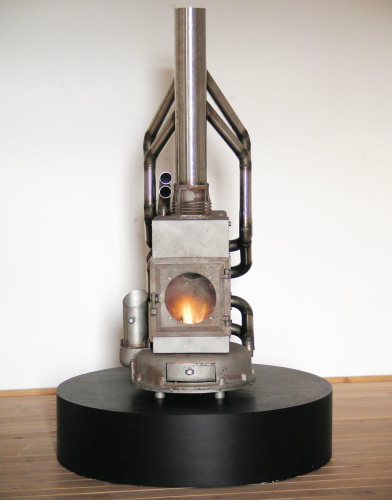
Wood Destroyer
PÉTER TAMÁS HALÁSZ, who graduated as a painter, has always created installations and objects although his objects often have the characteristics of panel paintings.

Cage Action, Documentary Photographs No. 1–7.
LÁSZLO HARIS participated at the exhibitions of the Szürenon group (a group of artists disillusioned with surrealism and non-figuration: “sur et non”) and at the chapel exhibitions in Balatonboglár from the late sixties.
Dynamic Structure No. 1
TAMÁS HENCZE, a member of the Iparterv generation, like his contemporaries, tasted the air of unlimited artistic freedom during a trip to Western Europe and decided to follow his own path in painting.

Top 5 State Employees
Their name also borrowed from a multinational company, the Johnson and Johnson artist duo prefer appropriating tools of media and visual communication – charts or newspaper format –, which they employ in their criticism of the capitalist system and its institutions.
Dot Line Image (3–2–1)
Painting itself has been the central theme of ZSIGMOND KÁROLYI’s activities since the seventies.
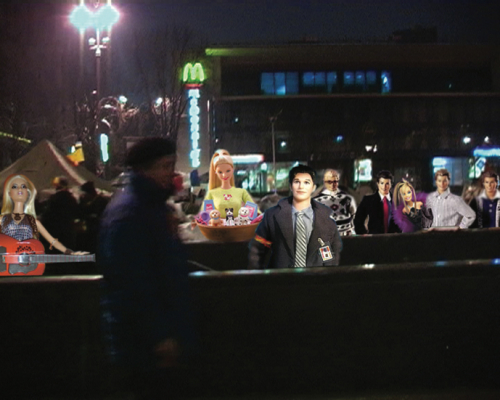
Velvet Labirynt
Gleb Katchuk and Olga Kashimbekova’s video work is a valuable documentary evidence of the times of the Orange Revolution of 2004. The artists walked through the rows of tents and barricades between the Bessarabska Sguare and Maidan Nezalezhnosti in the midst of the revolutionary events.

Ornament and Crime
KASZÁS mainly creates objects, installations and murals in public spaces.

Self-portrait as a Child
Graphic artist and poster designer GYORGY KEMENY arrived in Paris in 1963, where he first encountered pop art, the works of Warhol, Wesselmann, Oldenburg and Lichtenstein, by peering through an open storage door of a gallery.

Anima Nostra
ILONA LOVAS video was made for her solo exhibition at the Musee de Bibracte in France in 2007, for which she was awarded a scholarship by the foundation named after the poet Evelyne Encelot.

Lady Musgrave Reef
In 2002, when I transferred my work and life from Berlin to Vienna, my artistic endeavours were quite unspectacular. The cultural disconnection with natural environments in modern arts had started to bore me while back in Berlin.

Lukewarm water
At the beginning of his career, MEHES joined the surnaturalist group, and later created conceptual works, photographs and actions. Everyday, his work shown at the Second Iparterv Exhibition in 1969, is considered to be the first Hungarian photorealist painting.

plur.sing.
A group of his works is linked to poems by Austrian poets. The source of plur.sing. is a construction drawing for Konrad Bayer’s poem Time’s trumpet. Plur.sing.

Tomorrow13
MÁRTON NEMES is a prominent and innovative member of the young artists’ generation.

False Testimony - 3rd Version
The recorded opera performance entitled False Testimony – 3rd Version is based on a historical event and the dialogue of a film that deals with it. Between 1882 and 1883, the blood libel and show trial of Tiszaeszlar took place in Hungary.

On Republic’s Monuments - Monument to the soldiers of the First Cavalry Army near Olesko, Lviv region
The monument was placed above the Kyiv-Lviv highway. It was made of precious copper. Gradually the locals disassembled it for the metal.
On Republic’s Monuments - Hand of the monument to Lenin in Zaporizhia
he 16-ton bronze monument of Lenin is temporarily stored on the territory of municipal services in Zaporizhia after its dismantlement from the city center. The monument was one of the largest in Ukraine. The disassembling, that was broadcasted online, took a couple of days.

On Republic’s Monuments - Demolished monument to Engels in a repository of an oil mill in the village of Mala Pereshchepina, Poltava region.
The head of the village council decided to preserve the monument to Engels "until better days come" and placed it in the open space of the private oil mill. In Soviet times, Mala Pereshchepina was a collective farm named after Friedrich Engels.
Segmentation of A Poem
In addition to being a founding member of the Pécs Workshop, PINCZEHELYI also created individual works in the seventies.
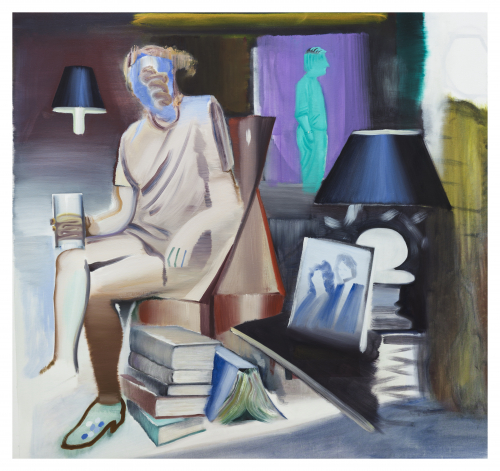
Immobile Objects
GÁBOR PINTÉR is a member of the young generation of painters who, breaking with the traditional canon of painting, use pictorial elements and techniques that have hitherto been unusual in painting. In his works, he applies the tools of the moving image and rapid graphics.

The Boss Has Gone Mad
He is a media artist, founding member of the Újlak Group between 1989 and 1995, organizer of the most progressive alternative exhibition space in Budapest, Tűzoltó u. 72, from 1990 to 1996, founder of the non-profit gallery U. F. F. in 1997.
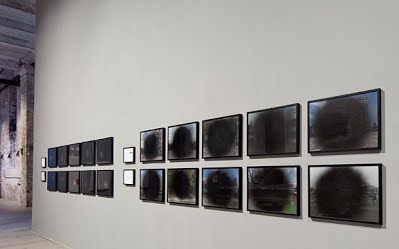
Blind Spot
The title of MYKOLA RIDNYI’s work is borrowed from ophthalmology. A blind spot is a small area on the retina where vision is created. To complement it, we rely on our own knowledge and memory without taking into account that we are continuously constructing reality.
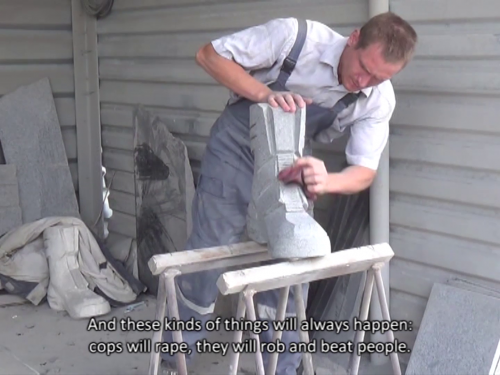
Water wears away the stone
For his film, Mykola Ridnyi conducted an interview with a former police officer, Dima, who at some point in his career decided to leave the police force and now works as a stonemason.

Without Pictures
RONAI’s art ranges from visual poetry, painting, mail art and copy art to installations, performances, photo, video and computer art, but these are mostly “just” tools in the service of a larger whole, an idea. It is the concept itself, i.e.
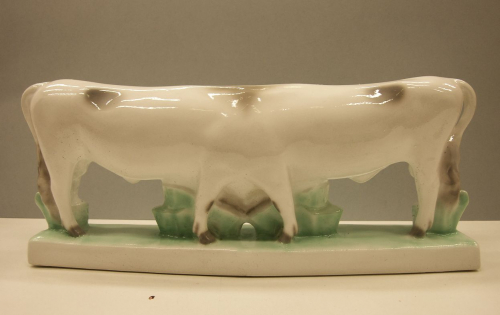
Double Vision No. 3 Grey Cattle
PÉTER SZALAY’s tiny pseudo-knick-knack is part of a series made in 2014.
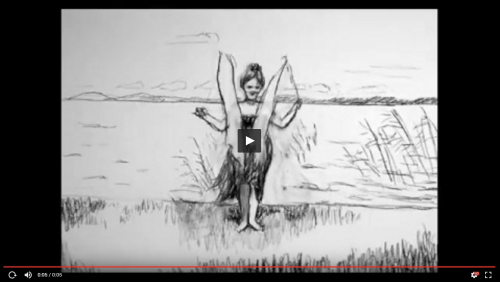
Poco Allegretto
A painter by training, Agnes von Uray has been making time-based works of art for years. In former works, the temporal sequences were arranged in narrative cycles: mostly drawn storyboards served as the basis of storytelling.
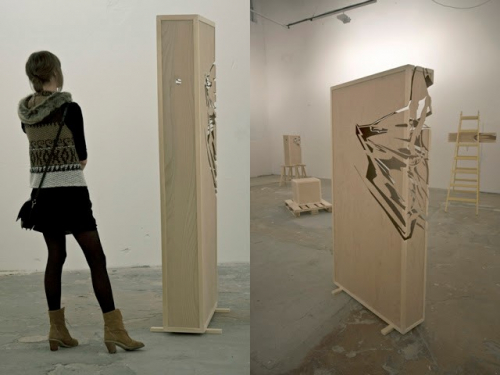
Case Study - Socially Engaged
In his work, TAMÁS SZVET takes a keen interest in the possibilities offered by classical and new techniques.

Evergreen Book for everybody nobody and me
ENDRE TÓT: Artist’s books An artist’s book is a unique or small-edition book created by visual artists, which has spread and established itself as a specific genre of contemporary art since the Fluxus movement.

Self-Portrait with Tossed Camera
He is an experimental photographer and visual artist, who he has been engaged with alternative art endeavours since the 1980s, and has also played an active role in the use of photography in the visual arts.

Hypnosis No. 2 (Coat)
ERWIN WURM has been working with textiles and clothes for about thirty years. Clothing, which is the boundary between inside and outside, embodies the demarcation between the outside world and the self in terms of human existence, and also carries many cultural-social symbols.

Think about Your Digestion – from the series One Minute Sculptures
The extremely simple (or astonishingly banal) so-called “one-minute sculpture” invites the viewer to self-realization, while making Wurm’s thoughts on sculpture experiential and tangible: what makes something a sculpture, what determines the meaning and value of an artwork, what is the relationsh
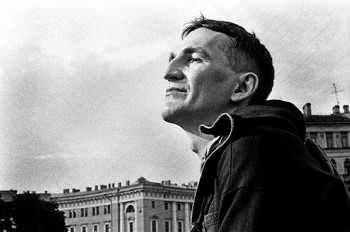
Portrait of Timur Novikov
Timur Novikov (1958–2002) started out in a classical avant-garde role (he was a cinema engineer, organised an exhibition in a church, played in rock bands – he even invented new musical instruments for them – directed films, made theatre sets before becoming the internationally renown founder of










